One of the finest examples of Islamic architecture from the fourth century AD is the ancient tower of Gonbad-e Qabus( UNESCO world heritage in Iran), also known as Gonbad-e Kavus. Despite the tower’s sparse use of decorative features, it is reinforced in a symmetrical manner. The tower, which stands 15 meters above the earth and was built in 375 Solar Hijri under the reign of Qabus-ibn Wushmgir, is the highest brick structure in the world.
About Gonbad-e Qabus
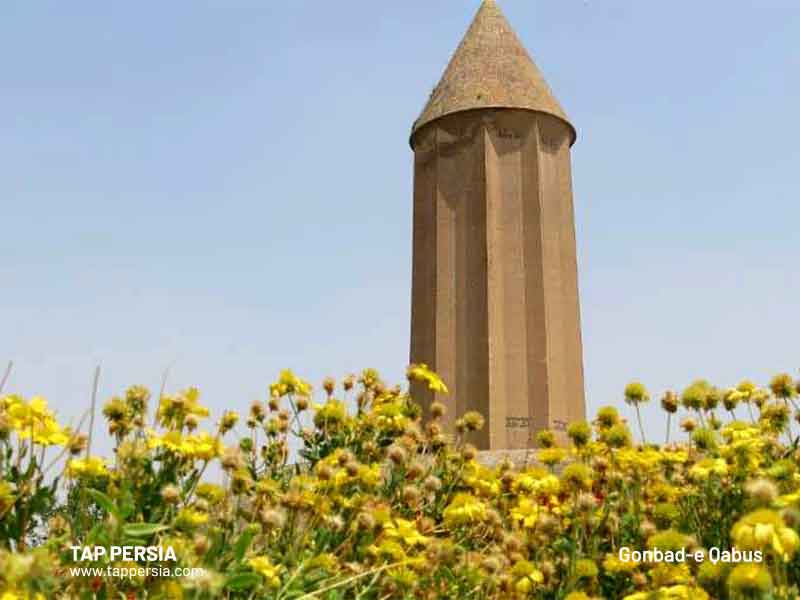 The largest brick tower of its sort in the world, Gonbad-e Qabus is one of Iran’s most important tomb towers. The UNESCO World Heritage List has listed it as a piece of Iran’s tangible cultural heritage. This stunning tower dates back to the tenth century when Iran was ruled by Qabus, the Ziarid king’s son and the son of Vushmgir. Even though the tower construction is straightforward and built of burnt bricks, it is remarkable and striking. Various viewpoints exist on the Gonbad-e Qabus tower’s purpose. Some people think it was a tomb and the final resting place of Qabus Ibn-e Voshmgir, a Ziarid king who ruled northern Iran during the 10th and 11th centuries.
The largest brick tower of its sort in the world, Gonbad-e Qabus is one of Iran’s most important tomb towers. The UNESCO World Heritage List has listed it as a piece of Iran’s tangible cultural heritage. This stunning tower dates back to the tenth century when Iran was ruled by Qabus, the Ziarid king’s son and the son of Vushmgir. Even though the tower construction is straightforward and built of burnt bricks, it is remarkable and striking. Various viewpoints exist on the Gonbad-e Qabus tower’s purpose. Some people think it was a tomb and the final resting place of Qabus Ibn-e Voshmgir, a Ziarid king who ruled northern Iran during the 10th and 11th centuries.
It is impossible to agree with or disagree with this opinion because archaeologists have not discovered any corpses in the cellar. Others think that Qabus intended to build this edifice to use it as an observatory based on his relationships with scientists, men of letters, and astronomers. These academics cite the historical records that show Qabus gave the order for the edifice to be constructed. Regardless of the construction’s purpose, Gonbad-e Qabus is a magnificent example of old architecture and draws the interest of passersby. It serves as a record of Iranian architecture and art history.
Structural Specifications & Features of Gonbad-e Qabus
This building’s architecture combines elements of early Razy and Khorasan styles. Fine materials were utilized in the construction projects. For instance, the entire construction is made of baked bricks. The structure’s quality speaks for itself. It has withstood the test of time, the elements, and numerous other cruel treatments. Gonbad-e Qabus has a conical roof, a circular exterior, and a 52-meter height. The foundation of the tower, a 10-meter-tall artificial hill, is where the entire tower was constructed. This tower has a 60-meter outside perimeter and a 30-meter interior perimeter. The inner diameter is 9.67 meters at the base.
3 Parts of Gonbad-e Qabus Tower Structure
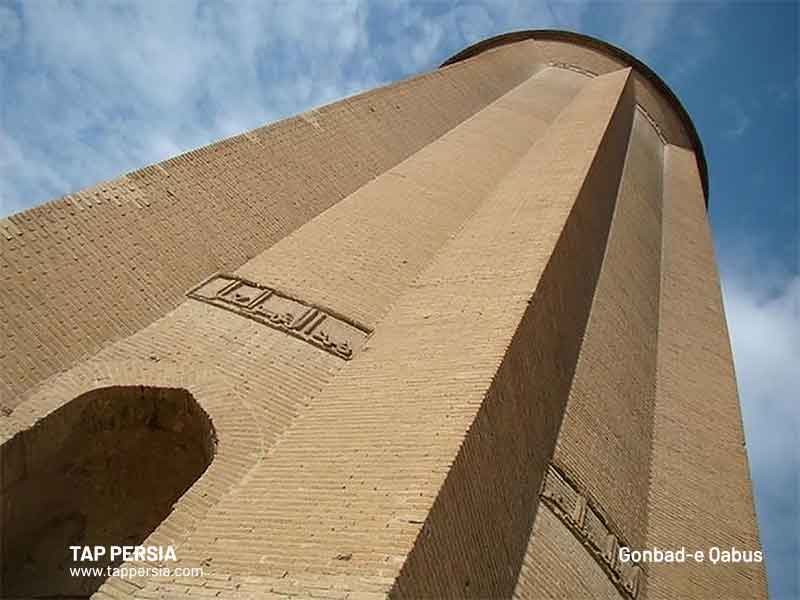
When there’s talk about the structure of Gonbad-e Qabus, 3 parts are mentioned. The 3 parts are as follows:When there’s talk about the structure of Gonbad-e Qabus, 3 parts are mentioned. The 3 parts are as follows:
Foundation
As was already noted, this tower is built atop a man-made hill. Bricks and “Sarooj,” a traditional Iranian concrete, are used in its construction. There is a cellar inside this foundation much like in any other tomb tower. Unfortunately, the looters who had been looking for wealth in this area over time have left very little of it behind. As was already noted, this tower is built atop a man-made hill. Bricks and “Sarooj,” a traditional Iranian concrete, are used in its construction. There is a cellar inside this foundation much like in any other tomb tower. Unfortunately, the looters who had been looking for wealth in this area over time have left very little of it behind.
Body
It is surrounded by right-angled buttresses, which cast silhouettes around it from the outside, enhancing its splendor throughout the day. This tower stands out from other similar towers of antiquity due to its construction on top of the hill, slender design, and pointed roof. There is only one entrance, which faces southeast, and its top is decorated with trilobed niches. One of the earliest instances of a muqarnas (stalactite vaulting) is this one.
Conical Roof
It stands alone and is 18 meters high. The interior and base of the roof both have a 9-meter diameter. The roof was also built by the architect using baked bricks.
Gonbad-e Qabus Constructional Materials
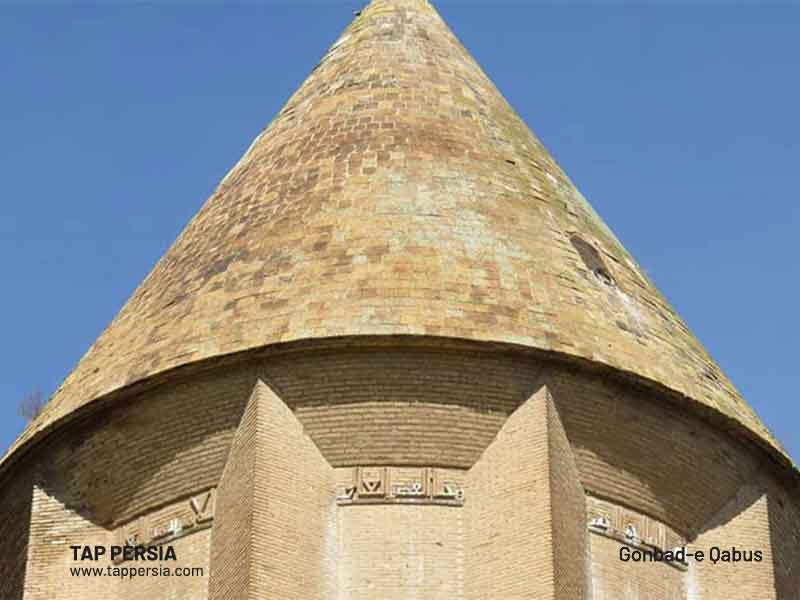
The roof was built by the architect using Sarooj and special tailed bricks called “Kafshaky.” There are two shells on the roof. Similar to earthen-built domes, the outside shell is formed of tailed bricks, while the interior shell is made of normal burnt bricks and is shaped like a half-egg. This tomb tower is more than a thousand years old despite lacking a significant subsurface basis. It has withstood powerful earthquakes with a Richter scale magnitude of 6 because it is so firmly planted in its location. Because there was no modern technology available when the tower was built, the architect employed the “Compaction” method to compress the earth in a spiral or stepped pattern around the façade. The tower’s base eventually developed a hill from this dirt.
Decoration at Gonbad-e Qabus Tower
A moqarnas corner may be seen higher up, at a semicircle style, at the base of the stalactite pattern, which is the tower’s first example of ornamentation. On both sides, Kufic writings may be seen, forming a belt around the tower’s trunk. One is 8 meters tall, while the other is right at the foot of the dome. The font is a readily visible, straightforward Kufic brick-made embossed lettering. Additionally, a brick frame has been built around it.”
Tomb Towers in the History of Iran & Their Functions
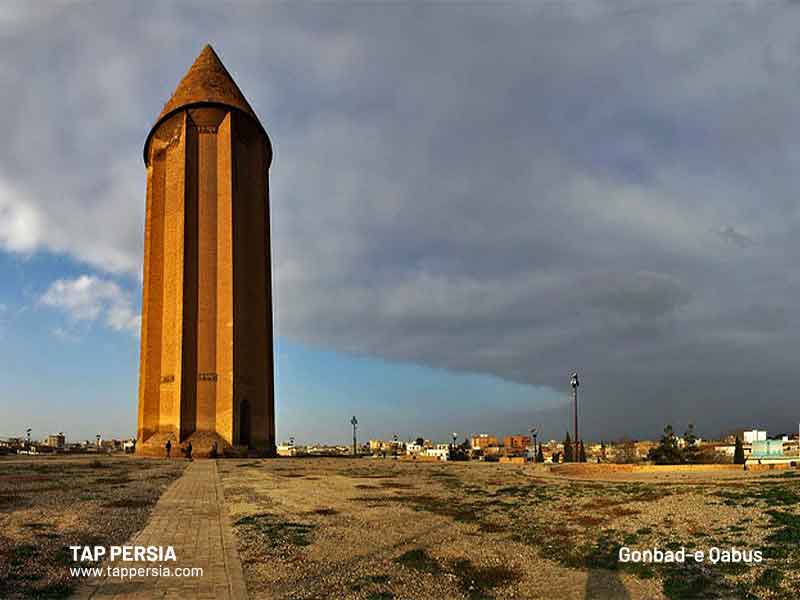
Along the roadways, routes, and city limits in antiquity, people erected tower-like buildings known as “Meel,” “Menar,” “Cheraghdan,” or “Cheragh Payeh.” Menar translates as the area of fire and brightness. In fact, they once lit fires on top of these buildings to illuminate the path for visitors during the night or on foggy days. They additionally employed light to transmit messages over great distances. During the Sassanid era (the third to the seventh centuries), ancient Iranians transformed these towers into fire temples and assigned Mubads (Zoroastrian priests) to maintain the fire.
Since the advent of Islam, Iranians have erected tomb towers in honor of the people they revere. The practice remained up to the seventh century when the Arabs brought Islam to Iran. This tradition was temporarily abandoned since the new religion opposed creating any type of memorial for the deceased. Even after converting to a new religion, Iranians made every attempt to revive this custom in their communities.
Around 400–600 years following the advent of Islam, or 11–13 centuries, the building of these structures once more became widespread. Thirty Meel or Menar, or tomb towers, were constructed during this time period in Iran. The oldest one still standing is one from the Parthian Era and is located in Mamasany Town under the name “Meel-e Ezhdeha.”
Other Historical Attractions Within the City
At the entrance to the city of Gonbad-e Kavus sits an ancient bazaar. The Russian Bazaar is one of the city’s principal business hubs. This indoor bazaar is well-known and features numerous shops on both sides. Check out Imamzadeh Yahya ibn Zayd as well. The descendent of one of the Shia Imams are interred in this structure. The Emamzadeh structure was constructed in 738. This building has had numerous renovations carried out by Iranians. Imamzadeh Yahya ibn Zayd is a well-known religious scholar from the province of Golestan. Every day, a large number of pilgrims and tourists arrive from various locations. As a result, most of the time it is crowded with pilgrims.
Natural Attractions of Gonbad-e Kavus
Here is a list of some breathtaking places in the area around the city:
Golestan Dam Area
The Golestan Dam is situated on the Gorgan River in the northeastern portion of Gonbad City. This dam’s surroundings are stunning. It is one of Gonbad-e-tourist Kavus’s attractions.
Alma Gol, Aji Gol, and Ala Gol wetlands
Among the other natural characteristics of Gonbad-e Kavus are the marshes of Alma Gol, Aji Gol, and Ala Gol. A variety of species travel to this lagoon during the migratory season, resulting in the breathtaking scenery. The Alma Gol Wetland is situated very near the border between Iran and Turkmenistan in the northern section of Gonbad City, north of Tangeli Village. 207 hectares make up this lagoon’s square shape. The Aji Gol wetland is situated in Tangeli Village’s southern region. The Alma Gol and Ala Gol marshes are separated by this 360-acre marsh. The Ala Gol Wetland is 60 kilometers away in Gonbad-e Kavus’ northern region. Green algae cover the majority of the lagoon bed, which is encircled by tamarisk and common reeds.
Hivehchi-ye Bala Village
You may see this settlement on the road from Gonbad to Aq Qala, which is located 17 kilometers southwest of Gonbad-e-Kavus. One of the Kavus Dome’s features that draws visitors to this region is this village. This village’s environment is breathtakingly gorgeous. If you are interested in camping in nature, you can travel to Hue Chi village and enjoy this fascinating experience. Traveling to this village at different seasons of the year has its own special charm and will show you different surprises. The surroundings of Hue Chi village are a very good place to camp and enjoy the night away. Undoubtedly, if you experience this village closely, you can find peace under the endless sky of the plain.
Artificial Lake of Gonbad-e Kavus
This lake is a popular gathering spot in the city of Gonbad-e-Kavus and is situated at its entrance. The lake is five hectares in size. The lake’s proximity to Shadi Park and the resort’s surroundings have made this recreational area more alluring.
Equestrian Complex
A vast complex featuring parking, greenery, a horse-racing track, suites, villas, winter and summer stables, competition grounds, and swimming pools is known as the Gonbad-e Kavus Equestrian Complex. The facility is situated on Moallem Boulevard in the Gonbad- Kavus city’s northeastern region. The spring and fall horse races draw spectators from all around the nation to the venue. They can travel to this region, which is near to the Caspian Sea and has stunning scenery and a nomadic population. Fans of Iran’s historical and natural attractions will find something to enjoy at the Gonbad-e Kavus tourist attractions.
When to Visit Gonbad-e Qabus
The winters are long, cold, dry, and partially foggy in Gonbad-e Kvs, while the summers are hot, humid, arid, and clear. The average annual temperature ranges from 38 to 96 degrees Fahrenheit, rarely falling below 29 or rising over 103. From early June to late September is the finest time of year to visit Gonbad-e Kvs for hot-weather activities.
Conclusion
This region of Iran is great for visitors from outside the country who are looking for cultural and natural attractions. The Golestan Province is located southeast of the Caspian Sea and northeast of Tehran. Numerous cultural attractions are available there, including the Hyrcanian forest and the way of life of the local Turkmen tribes. Prepare without a doubt to also visit the Gonbad-e Qabus tomb tower when you are there. Despite several historical occurrences, it is worthwhile to spend the time and effort getting to this location.


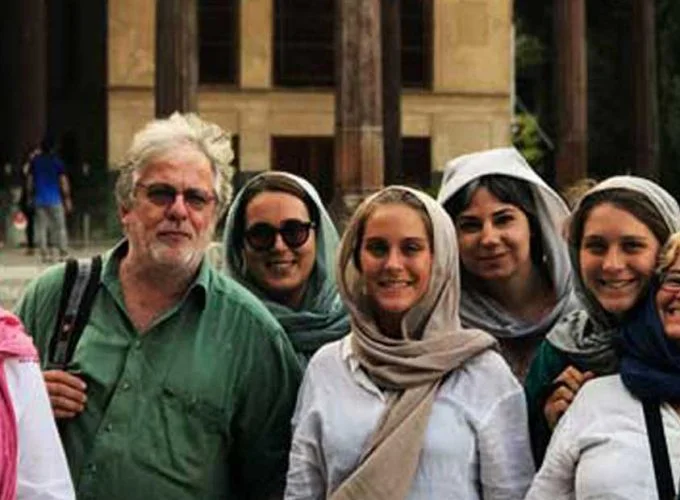
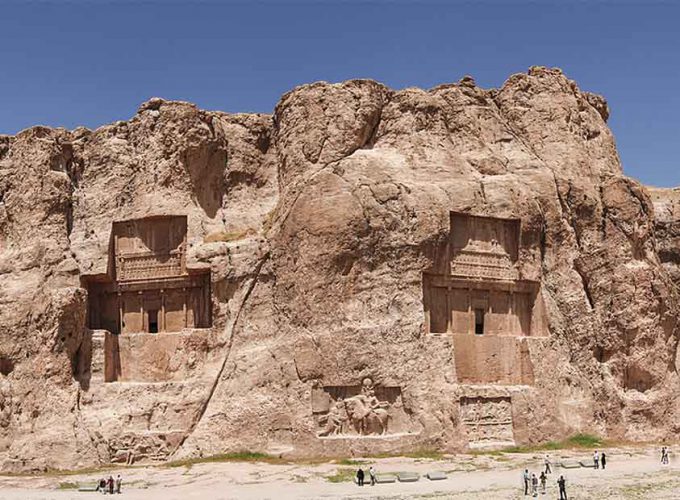

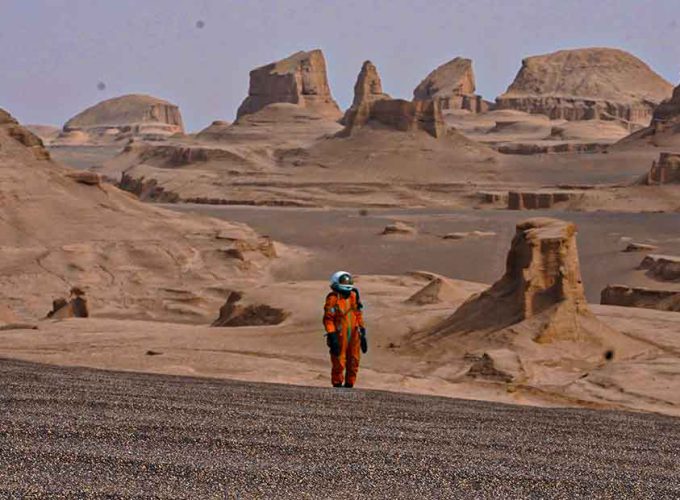
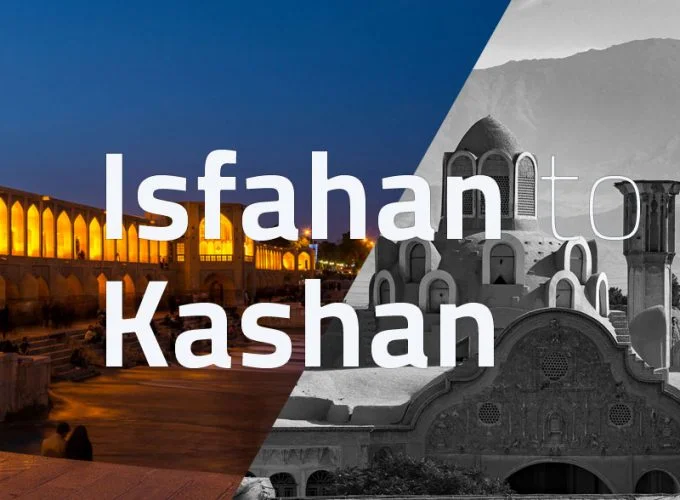


Comment (0)